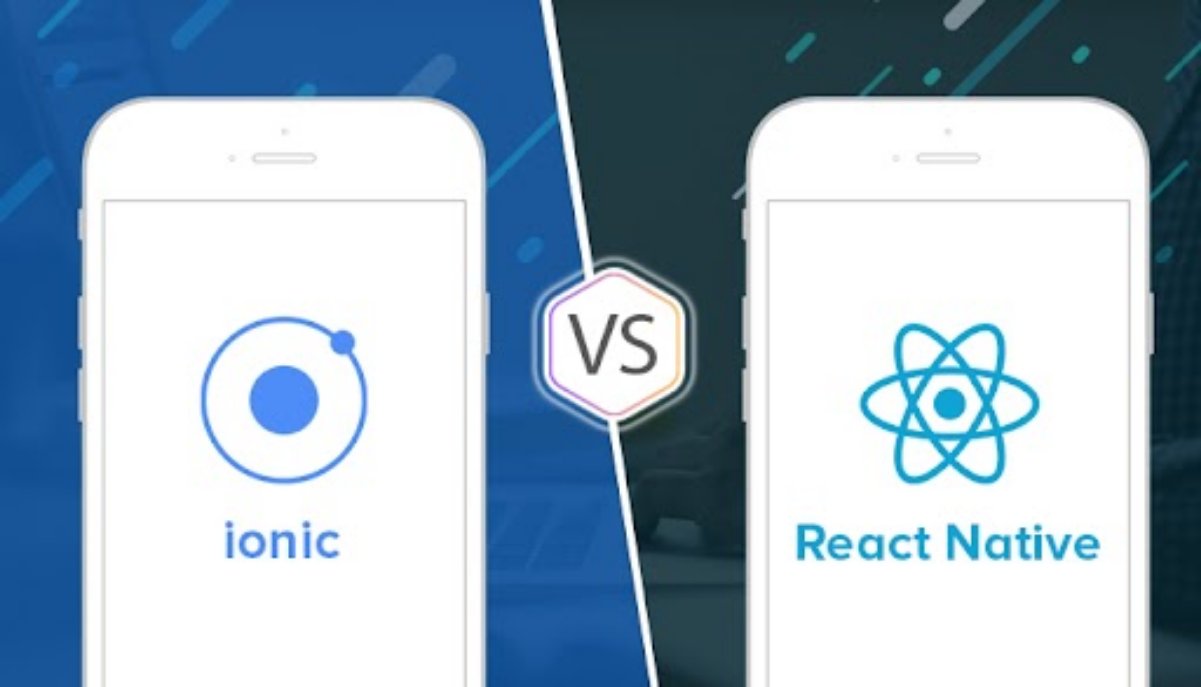At Square63, we believe in innovation and embracing cutting-edge technologies. That is why we have added a latest hybrid mobile application framework known as React Native into our artillery of Programming solutions. In this article, we will be comparing React Native with another popular app development framework known as Ionic, which is based on the famous AngularJS. However, before starting the comparison, let’s have a quick introduction of the two frameworks under examination in a space of few words, which would help you to understand the difference in a better way.
React Native is released in 2015 and maintained by Facebook, this innovative framework has currently around 40,000+ stars on its GitHub repository. As evident from the name, the framework is based on React.js. All the development is done in JS. The main edge that is advertised by Facebook regarding React Native is that it is “not an HTML5 app or a hybrid app”.
Ionic, founded in 2012, its first release on GitHub was launched in the ending stages of 2013. It is currently being maintained by Drifty, and possesses a total of 26,000+ stars on its GitHub repository. Their main tagline or business pitch is “Write once, run anywhere”. Ionic uses HTML, CSS and JS for development.
Now that we’ve been fully acquainted with the two frameworks aesthetically, We would like to begin the comparison between React Native and Ionic.
1) Performance
Performance is one of the most important attributes, whose presence is necessary in an application that intends to be popular and usable. If the application does not provide rapid feedback to the user upon actions, then basically the main essence of the application is lost. If an application is slow and frequently unresponsive, then users will eventually get frustrated, delete the application and abandon using it, which obviously results in lesser downloads and lesser revenue generation.
When we compared React Native with Ionic, we found out that React Native is much faster than Ionic. Ionic works like a typical hybrid application, using a webview to display components that are written using HTML, CSS. On the other hand, in React Native, the bridge enables us to call the APIs for corresponding native display components for Android or iOS, through the JS that we have coded, thus behaving like a native app, and increasing its performance by a significant margin. Hence, React Native takes the lead as far as performance is concerned as compared to Ionic.
2) Reliability and Credibility
When we are developing an application to deliver a business solution, we use those technologies that are reliable, trusted and used by not only the flag-bearers of the computer science and software engineering industry, but other leading companies as well. A great application showcase only increases the credibility of that technology.
Looking at the application showcase of React Native, first of all, we see the two most popular applications of the history of smartphones, without the ones we cannot even think to use a smartphone. That’s right, I am talking about Facebook and Instagram. Other than that, React Native has huge names attached to it such as Airbnb. Also, a Chinese search engine, Baidu, which has more than 600 million users, also make use of React Native. On the other hand, if we visit Ionic’s application showcase, it is being used by many companies, but the organizations are not as notable as compared to Facebook, Instagram or Baidu. Hence, this proves that the tech giants have put their faith into React Native and as far as a business decision is concerned, React Native is a much better option.
3) Developer Experience
Developer Experience is another very important aspect in selecting a programming framework. Companies that develop large frameworks and IDEs research and invest a lot on making better programming interfaces and easier debugging processes. This results in an increase in the usability of their tools, so the programmers do not find any hurdles to achieve their goals.
In Ionic framework, as the code is written in HTML & CSS, it can be instantly tested within a browser. The results can be seen in a more rapid fashion, but some user experience related issues can only be tested on multiple mobile devices, therefore, it has to be tested on a device as well. On the other hand, React Native enables us to run the application in debug mode on the device, through which we can see the logs and error messages on browser, while application is running on the mobile device. React Native also provides us with the facility of hot reloading, which directly reloads the application on the mobile device connected to your development machine, as soon as you save your changes. Moreover, if you are using Redux, it has a very neat logger that displays the previous and next states in browser console, which is pretty awesome. As a side-note, in some aspects, I would rather say that the developer experience provided by React Native gives a tough competition to the one provided in native android development by Android Studio.
4) Compatibility across Platforms
As stated in the beginning, the main selling point of the Ionic framework is “Write once, run anywhere”. And it has been implemented quite well. The code remains generic and uniform for all platforms, and all major components provided by Ionic by default, as stated in their documentation, are shared across platforms.
On the other hand, React Native provides us a lot of platform specific libraries and display components. That allows the user to create a better user experience for different demographics of smartphone users. Although, sometimes there arises a compatibility issue for libraries across platforms, and many node packages developed by the open source community provide a solution for one platform only, but eventually, these minor issues will get resolved as the community keeps on growing.
Conclusion:
Summarizing the comparison, we have seen that React Native apps perform better and it is more reliable as a technology than Ionic. However, Ionic provides a better and quicker solution when it comes to develop a hybrid application in a shorter period of time due to more compatibility across platforms. The learning curve of Ionic is easier as compared to React Native as it uses familiar concepts and languages, but React Native provides a programming environment that is closer to native application development. Choosing one out of the two frameworks depends upon the requirements and the use-cases, so you can not really declare that one of them is the winner over the other framework. However, there is no bound on having an opinion, and I feel that React Native provides a much better solution from the viewpoint of a developer. We are looking forward to listen to your point of view and preference between the two of these popular frameworks being used widely in the mobile development industry.





